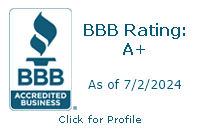Getting a new roof presents you with a lot of options. It can be a lot to take in, but it shouldn’t be something that stresses you out. Follow this guide to roofing options to help you make the best decision for your home or business.
One thing to keep in mind: the following consists of general information about the most common roofing materials. One or more may be ideal depending on your home or business. Do not be afraid to ask our roofing experts about additional options when you reach out to us!
Asphalt Shingles – Most Commonly Used
Asphalt shingles are the most common roofing materials for residential homes because they priced fairly and are easy to install. They also come in a variety of colors that can accent almost any color pallet on a home’s exterior. The major attractive features of asphalt shingles are their versatility and price. Asphalt shingles can often be found for well under $100 per square (100 square feet), but they can also go above $100, depending on the manufacturer.
There are no major drawbacks to asphalt shingles, but the thing they suffer from the most is that often they aren’t AS good as other materials. This doesn’t mean they are bad, especially for the price. They can have a lifespan of over 20 years, but some other materials last even longer. They insulate well, but some other materials insulate even better. They are good quality roofing materials, but some other materials are more resilient and will protect your home even more.
In the end, they are a more than adequate roofing material that we install on many, many homes, but if you have the available budget and are willing to invest a bit more, there are other options available to you.
Metal Roofing – Gaining Popularity
The first thing that people think of when they hear about metal roofing is that it’s only for commercial buildings or barns. This is just one of the common myths associated with metal roofs. Metal roofing has been used on residential homes in Minnesota and throughout the Midwest for years, and it’s quickly gaining more popularity among homeowners.
The major draw towards metal roofing (especially in Minnesota) is its resilience to extreme weather. Metal roofs are extremely durable and great for both high temperature summers and frigid winters. The metal used is a great insulator, can reflect light (keeping heat out) and also resists those below-zero temperatures that come each winter. Most importantly, it’s arguably the longest-lasting roofing material with a lifespan that can exceed over 50 and 60 years. The materials are also lightweight, sustainable, can be recycled and also come in a variety of color options and styles – shingles, shakes, slate, tile and standing seam.
Metal roofing varies in price, dependent on the materials and manufacturer. It’s definitely more expensive than asphalt shingles, but it’s comparable with clay tiles.
Wood Shingles and Shakes – Specialty
Wood shingles are one of the oldest roofing materials in existence. They have been used for years on all sorts of homes in all sorts of environments. There are lots of wood options to choose from, each with their own unique look and coloring. While it may seem like a fire hazard, modern wood products are treated with fire-resistant coatings. However, they still won’t offer the same fire resistance as metal, slate or clay tiles.
Wood roofing will give your home a nice, rustic look while offering good protection for a good price. Depending on the type of wood used, they can start at over $100 per square and only go up from there. The drawback to wood roofing is that it’s susceptible to mold, rot and insects that come with particularly wet climates. There is an extra bit of maintenance that comes with this material but, if you love the look, it’s definitely well worth it.
Clay Tiles
Many homeowners don’t use clay tiles in Minnesota and the surrounding states, but that doesn’t mean you won’t ever see them here. Clay tiles are most notably seen on southwestern homes in the U.S. as well as throughout Central and South America. This is because of regional styles and their utility. Clay tiles are particularly good for homes located in hot and humid environments as well as homes that are located in coastal areas.
Their main benefits is that they are long lasting, very fire-resistant and energy efficient. They are great for homes in areas where there is a lot of moisture in the air, or where wildfires are common. They can last above 40 years.
Their main drawback is price. Clay tiles can cost up to $300-$500 per square, and they often require additional framing for roofs to support them.
Slate
Slate is a very distinct material that comes in many colors can add a unique appeal to your home. It’s very durable, competing with metal as one of the most durable roofing materials on the market. When properly maintained, it’s easy to get 50 years of more out a slate roof. It’s also very durable, resistant to fire and sustainable since it can be recycled.
It’s primary drawbacks are price and weight. Slate can easily run you over $500 per square in price, and it can be expensive to install since it’s heavy and will require extra framing to support. If you have the budget, are looking for a long-lasting roof and really like the look of this material, it’s definitely an option to look into.
Why Can’t We Just Give You Exact Prices of Materials?
We would love to! But unfortunately it’s not that easy to write into a blog post. Putting something down “on paper” here doesn’t account for the fact that market prices for materials change. What it is today may not be next week. The second reason is that, like most products, there are many manufacturers to choose from, and each has their own price for their roofing materials. When you get in touch with us, we will recommend products to use and will give you a precise quote for free! Contact Schmidt Roofing today to get a quote on your new roof.





